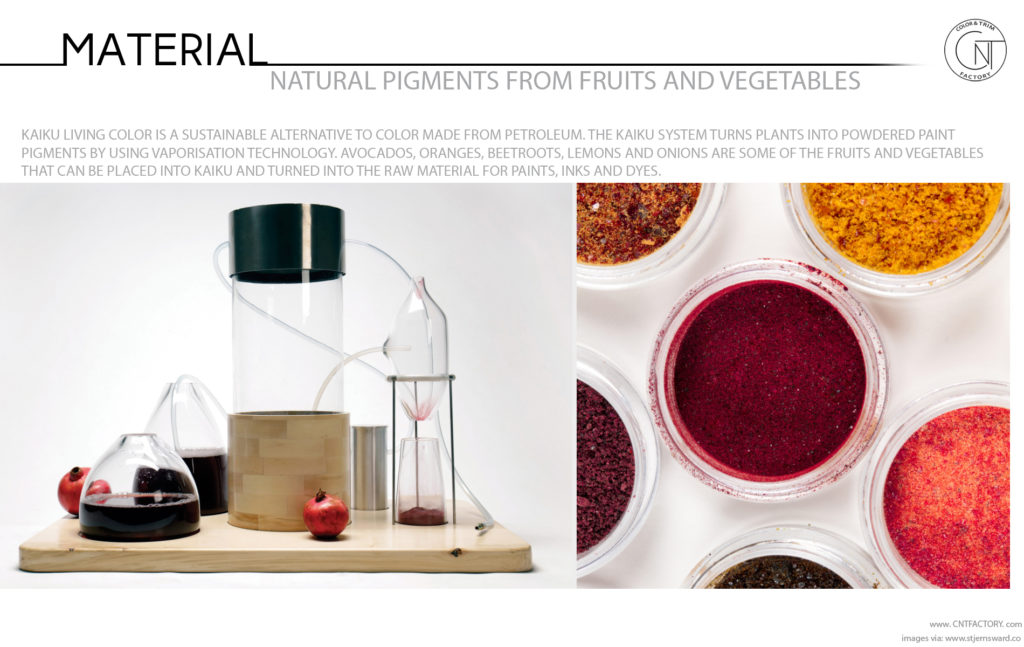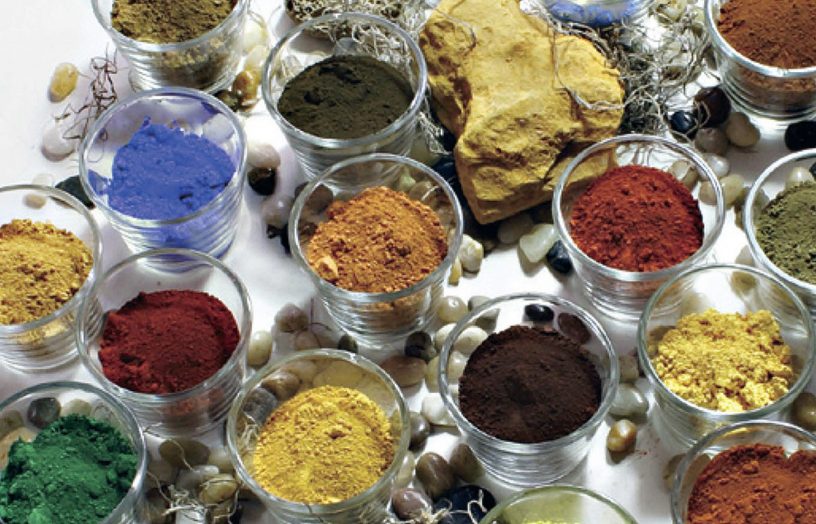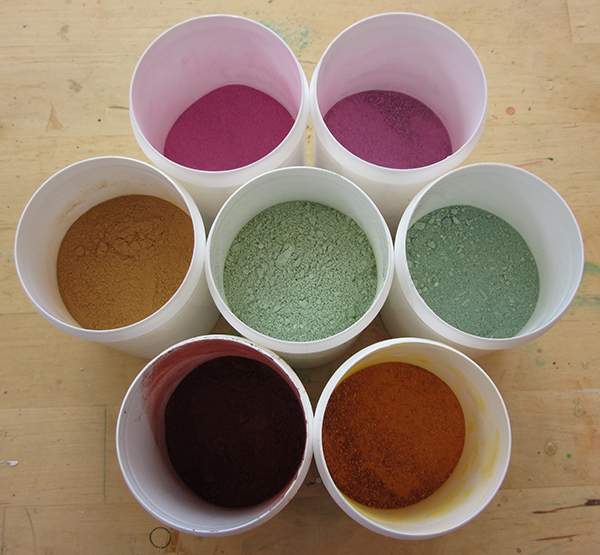Your Natural pigments from plants images are available in this site. Natural pigments from plants are a topic that is being searched for and liked by netizens today. You can Get the Natural pigments from plants files here. Download all free photos.
If you’re searching for natural pigments from plants images information connected with to the natural pigments from plants keyword, you have pay a visit to the ideal blog. Our site always gives you hints for viewing the maximum quality video and image content, please kindly search and find more informative video articles and graphics that match your interests.
Natural Pigments From Plants. These molecules are essential during photosynthesis. Sources of natural colorants pigments are found widespread in nature from the simplest procaryotic organisms like cyanobacteria, and throughout the kingdoms of fungi, plants, and animals. Vibrant colors can be made using resources right from your backyard. We’ve been working on r&d with natural pigments since 2016 and after many trials and experiments, we can firmly say yes, you can formulate colour cosmetics with plant pigments.
 Natural and NonToxic Pigments Natural Pigments From naturalpigments.com
Natural and NonToxic Pigments Natural Pigments From naturalpigments.com
The most common natural pigments are chlorophyll (the green color), beta carotene the (orange color) and lycopene (the red color). Natural pigments are literally everywhere, and if you travel and spend time in nature, you can find a wide variety of colors. Blue tansy oil, buriti oil, rosehip oil, saffron, spirulina, henna, hibiscus extract, indigo and woad are just some of the fascinating, natural pigments around which can be harnessed for natural cosmetic formulation. As you can see, the safe use of plant pigments in cosmetics is a vast and complex topic and it is one we have been navigating for the past six years at formula botanica. 15 ml of boiling water for 20 minutes or so. Most natural food colorants come from the division magnoliophyta(flowering plants) of the plant kingdom.
To thicken it you can add a bit of powdered gum arabic.
Most natural food colorants come from the division magnoliophyta(flowering plants) of the plant kingdom. Colors of soil, clay, sand, or stone. Chlorophyllins are water soluble and relatively stable when exposed to heat and light. Show the molecules of a,b and d chlorophyll, beta carotene and lycopene. Plants, roots, nuts, fruits, vegetables, and flowers of all different types each generate a unique color when applied correctly. This pigment functions by providing colour to the stem, leaves, roots, fruits, and flowers.
 Source: cntfactory.com
Source: cntfactory.com
Sources of natural colorants pigments are found widespread in nature from the simplest procaryotic organisms like cyanobacteria, and throughout the kingdoms of fungi, plants, and animals. (total 17 products for natural pigments from plants) best natural lycopene 5%. You can make them into a pigment for paints, but the iron won’t bind with animal or plant fibers. Many dyes require a mordant, an element that combines with a. Plants, roots, nuts, fruits, vegetables, and flowers of all different types each generate a unique color when applied correctly.
 Source: francesorganicbeautysecrets.com
Source: francesorganicbeautysecrets.com
The most common natural pigments are chlorophyll (the green color), beta carotene the (orange color) and lycopene (the red color). I took 1tsp of loose rooibos tea and allowed it to steep in approx. These are cyclic tetrapyrrole pigments chelated with magnesium, and they share structural features with the haem and bile pigments of animals. Natural dyes can be sorted into three categories: Natural pigments are literally everywhere, and if you travel and spend time in nature, you can find a wide variety of colors.
 Source: bolinherb.com
Source: bolinherb.com
Based on their ph, these type of pigments appears red,. You can make them into a pigment for paints, but the iron won’t bind with animal or plant fibers. Naturally occurring red pigments in plants are carotenoids, anthocyanins and betacyanins. Henna comes powdered, which you mix with hot water and an acidic ingredient like lemon juice or strong tea to release the dye. To date, i have collected quite a few pigments from my travels in the last couple of years.
 Source: idesign.wiki
Source: idesign.wiki
Chlorophyllins are water soluble and relatively stable when exposed to heat and light. 15 ml of boiling water for 20 minutes or so. Natural pigments are literally everywhere, and if you travel and spend time in nature, you can find a wide variety of colors. The dyes have shown absorption in broad range of the visible. Factory natural organic beet root powder.
 Source: naturalpigments.com
Source: naturalpigments.com
The dyes have shown absorption in broad range of the visible. Humans have always incorporated the natural pigments of fruits, vegetables and spices into their dietary requirements. Orange dyes from plants can be made from: Chlorophyllins are water soluble and relatively stable when exposed to heat and light. Polyphenols were from 404 μg/ml to 11 μg/ml with the highest for onion peel and the lowest for chinese foxglove pigments.
 Source: renew.org.au
Source: renew.org.au
Carotenoids and phenolic compounds) are hydrophobic in nature all plants were subjected to extraction at various ph levels (ph 5, and have limited solubility in water. Green pigments involved in the photosynthesis of higher plants, incl. To date, i have collected quite a few pigments from my travels in the last couple of years. Natural pigments, apart from colour, provide added properties and are therefore considered to be bioactive constituents. Extracting natural pigments from plants.
 Source: cocooncharacters.com
Source: cocooncharacters.com
You can make them into a pigment for paints, but the iron won’t bind with animal or plant fibers. Pink dye can be derived from: Plant pigments plant pigments exist in many varied forms, some with highly complex and large structures. You can make your own diy natural pigments right at home and use them for a variety of different art projects. Most natural food colorants come from the division magnoliophyta(flowering plants) of the plant kingdom.
 Source: yipinusa.com
Source: yipinusa.com
Vibrant colors can be made using resources right from your backyard. Many dyes require a mordant, an element that combines with a. The hazardous effects and legislation of synthetic dyes minimize its applications thus the search for natural pigments is in trend. Natural pigments obtained from plants, natural pigments obtained from animals, and natural pigments obtained from minerals. Naturally occurring red pigments in plants are carotenoids, anthocyanins and betacyanins.
 Source: jiejing-alginate.com
Source: jiejing-alginate.com
To thicken it you can add a bit of powdered gum arabic. Blue tansy oil, buriti oil, rosehip oil, saffron, spirulina, henna, hibiscus extract, indigo and woad are just some of the fascinating, natural pigments around which can be harnessed for natural cosmetic formulation. For example, over 600 naturally occurring carotenoid structures have been identified (britton, You can make your own diy natural pigments right at home and use them for a variety of different art projects. Pigment properties from natural plants, which are used as an important alternative to synthetic colors, were examined.
 Source: slideshare.net
Source: slideshare.net
This pigment functions by providing colour to the stem, leaves, roots, fruits, and flowers. Show the molecules of a,b and d chlorophyll, beta carotene and lycopene. Naturally occurring red pigments in plants are carotenoids, anthocyanins and betacyanins. For example, over 600 naturally occurring carotenoid structures have been identified (britton, Extract the colorfull pigments of the different plants to be analyzed by chromatography.
 Source: mandarorganics.com
Source: mandarorganics.com
Orange dyes from plants can be made from: I took 1tsp of loose rooibos tea and allowed it to steep in approx. These molecules are essential during photosynthesis. Chlorophyllins are water soluble and relatively stable when exposed to heat and light. Chlorophylls are naturally occurring pigments that give plants their green color.
 Source: thebeakerlife.com
Source: thebeakerlife.com
Natural dyes obtained from plants. 15 ml of boiling water for 20 minutes or so. Plants, roots, nuts, fruits, vegetables, and flowers of all different types each generate a unique color when applied correctly. Humans have always incorporated the natural pigments of fruits, vegetables and spices into their dietary requirements. Vibrant colors can be made using resources right from your backyard.
 Source: pinterest.com
Source: pinterest.com
Pigments indigenous to foodpigments indigenous to food a. Colors of soil, clay, sand, or stone. Anthocyanins are a type of flavonoid pigments found naturally in all the tissues of the higher group of plants. Natural motherwort extract,motherwort extract powder. Green pigments involved in the photosynthesis of higher plants, incl.
 Source: homestratosphere.com
Source: homestratosphere.com
Purple colors can come from: Sources of natural colorants pigments are found widespread in nature from the simplest procaryotic organisms like cyanobacteria, and throughout the kingdoms of fungi, plants, and animals. Purple colors can come from: Uses include sugar confectionery and dairy products. The hazardous effects and legislation of synthetic dyes minimize its applications thus the search for natural pigments is in trend.
 Source: gardeningknowhow.com
Source: gardeningknowhow.com
Based on their ph, these type of pigments appears red,. Pink dye can be derived from: The hazardous effects and legislation of synthetic dyes minimize its applications thus the search for natural pigments is in trend. However, natural colorants from other 15 ml of boiling water for 20 minutes or so.
 Source: theoilyguru.org
Source: theoilyguru.org
Extract the colorfull pigments of the different plants to be analyzed by chromatography. Factory natural organic beet root powder. Blue tansy oil, buriti oil, rosehip oil, saffron, spirulina, henna, hibiscus extract, indigo and woad are just some of the fascinating, natural pigments around which can be harnessed for natural cosmetic formulation. Natural pigments obtained from plants, natural pigments obtained from animals, and natural pigments obtained from minerals. The dyes have shown absorption in broad range of the visible.
 Source: toniwattsartstudio.com
Source: toniwattsartstudio.com
Pink dye can be derived from: For natural plant dyes in shades of brown, look for: You can make them into a pigment for paints, but the iron won’t bind with animal or plant fibers. It is a green, oil soluble colour. Plants, roots, nuts, fruits, vegetables, and flowers of all different types each generate a unique color when applied correctly.
 Source: futurematerialsbank.com
Source: futurematerialsbank.com
Natural pigments are literally everywhere, and if you travel and spend time in nature, you can find a wide variety of colors. The ancient craft of pigment making. This review presents the basic information about pigments focusing attention on the natural ones; Orange dyes from plants can be made from: 15 ml of boiling water for 20 minutes or so.
This site is an open community for users to do sharing their favorite wallpapers on the internet, all images or pictures in this website are for personal wallpaper use only, it is stricly prohibited to use this wallpaper for commercial purposes, if you are the author and find this image is shared without your permission, please kindly raise a DMCA report to Us.
If you find this site value, please support us by sharing this posts to your favorite social media accounts like Facebook, Instagram and so on or you can also bookmark this blog page with the title natural pigments from plants by using Ctrl + D for devices a laptop with a Windows operating system or Command + D for laptops with an Apple operating system. If you use a smartphone, you can also use the drawer menu of the browser you are using. Whether it’s a Windows, Mac, iOS or Android operating system, you will still be able to bookmark this website.






